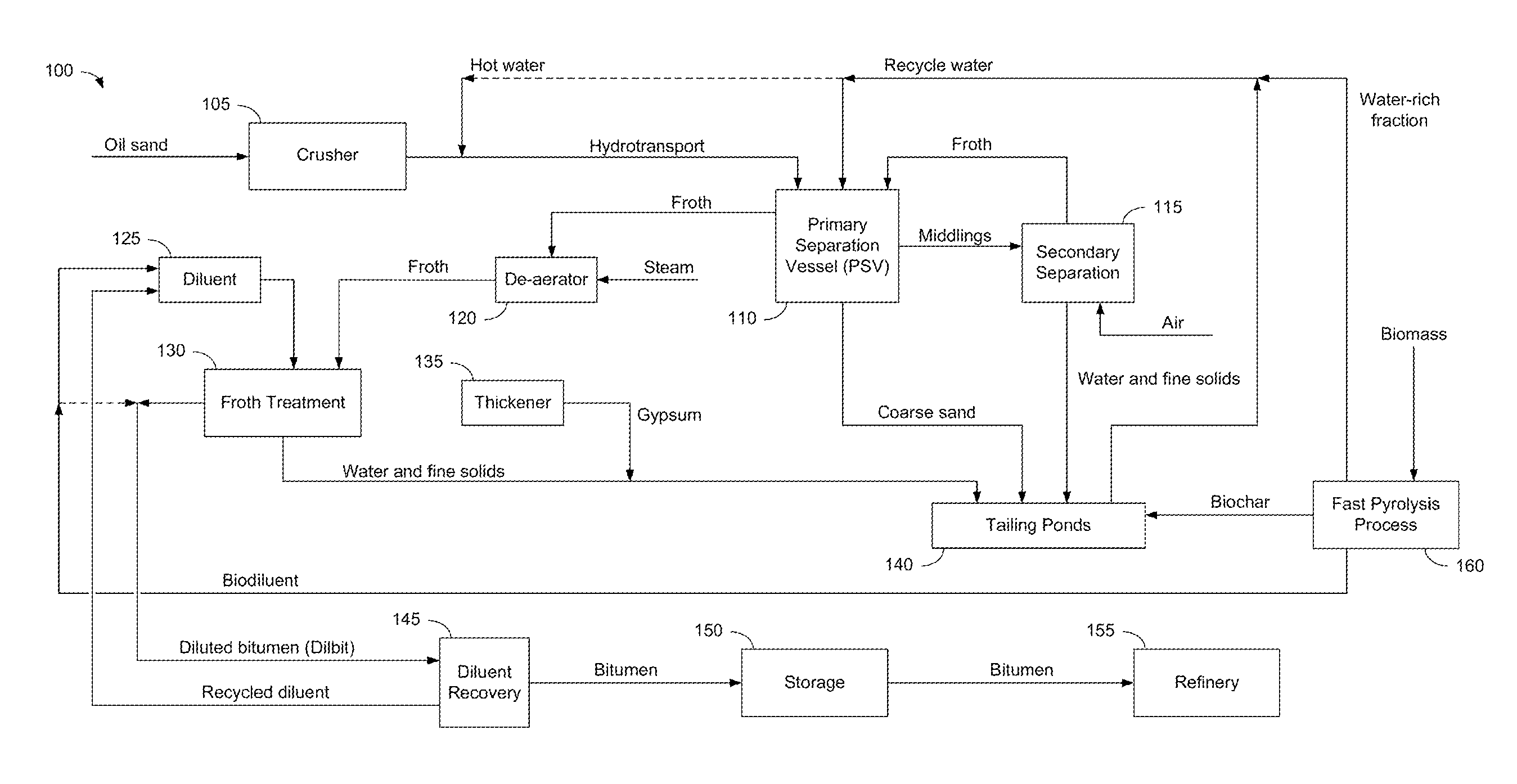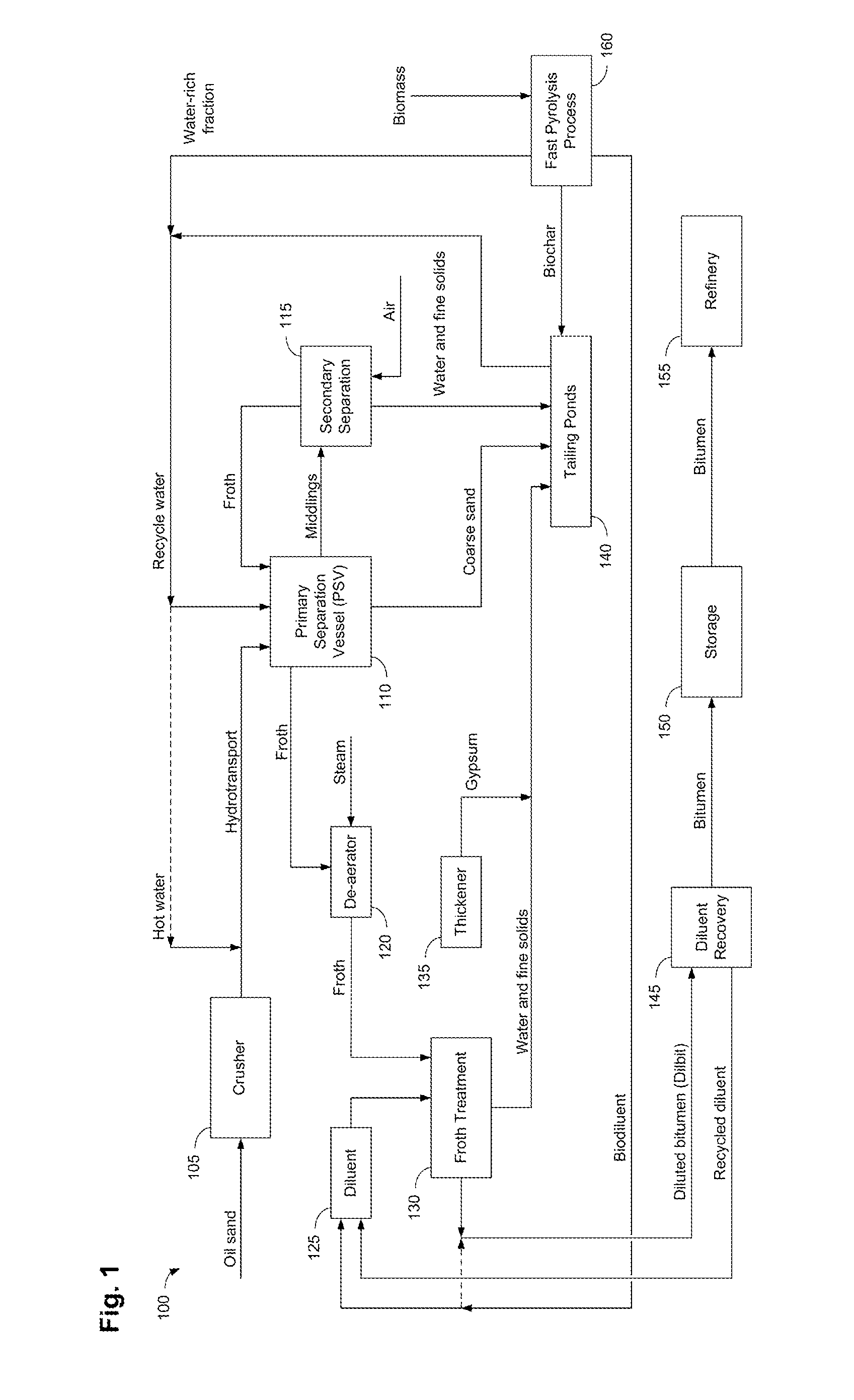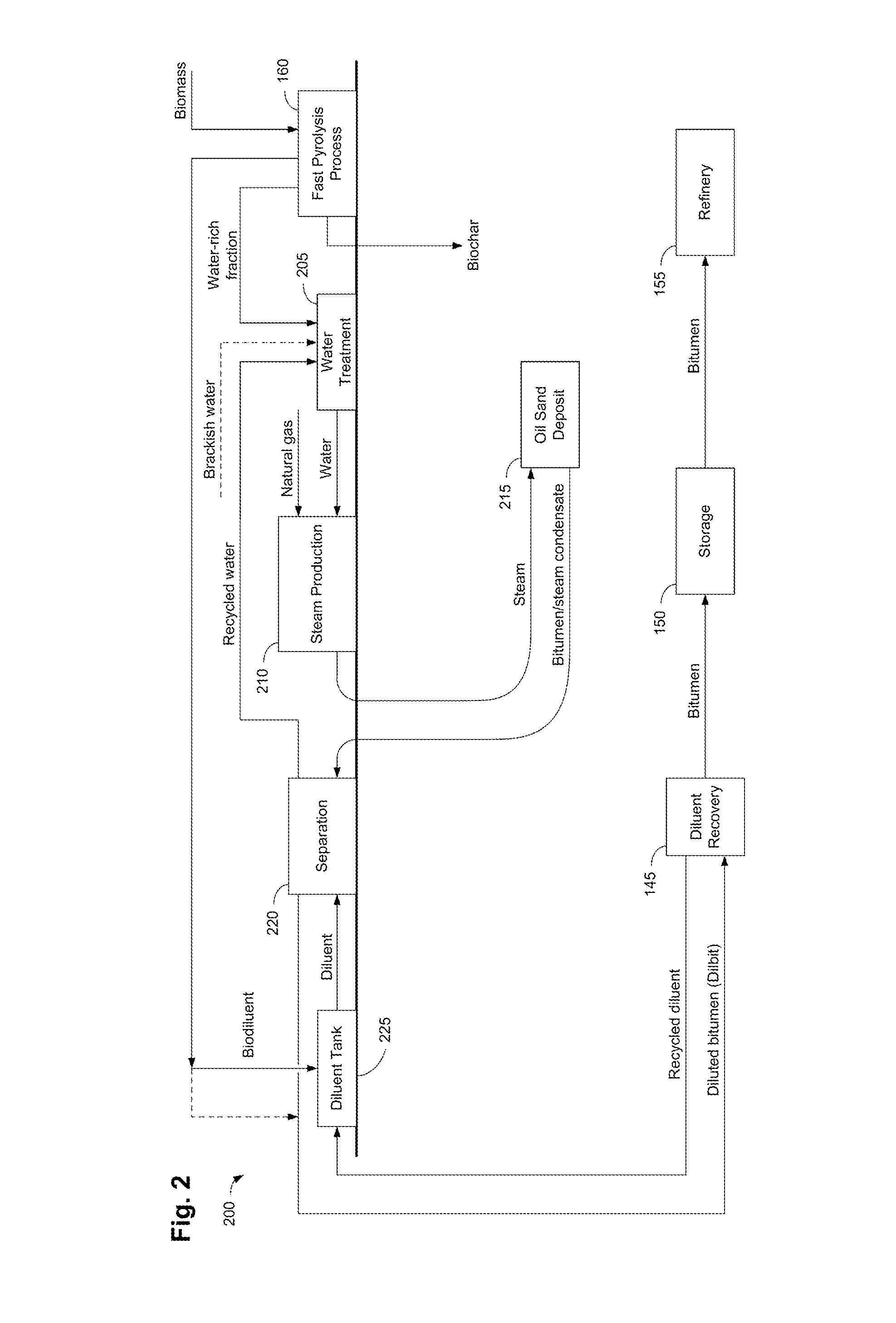Methods, apparatus, and systems for incorporating bio-derived materials into oil sands processing
a bio-derived material and oil sands technology, applied in sustainable manufacturing/processing, grain treatment, borehole/well accessories, etc., can solve the problems of increasing the energy consumption of mining and in situ extraction techniques, unable to pump or extract oil sands using traditional oil production methods, and reducing the ghg emission profile of oil sands bitumen, etc., to achieve the effect of reducing ghg emissions, improving properties, and reducing ghg emission profiles
- Summary
- Abstract
- Description
- Claims
- Application Information
AI Technical Summary
Benefits of technology
Problems solved by technology
Method used
Image
Examples
example 1
[0173]Simulated oil sands bitumen, biodiluent and hydrocarbon diluent blends were created and analyzed to determine pipeline quality. A sample of Western Canadian Select (WCS) diluted crude was heated to 210° C. and distilled at atmospheric conditions to remove hydrocarbon diluent and recover crude according to modified ASTM D2892. Asphalt binder (PG 58-22) was heated on a hot plate until liquid and added to the recovered crude to create a simulated oil sands bitumen (65 wt % asphalt binder and 35 wt % bitumen) with a viscosity profile similar to a typical Athabasca bitumen (Attanasi & Meyer, 2007).
[0174]A particular biodiluent mixture was produced by heating and combining wood-derived pyrolysis oil fractions 1 through 4. The fractions were produced using a pilot scale fast pyrolysis system described in U.S. Pat. No. 8,100,990.
[0175]The density and viscosity profile of the simulated bitumen, biodiluent and recovered petroleum diluent are found in Table 2.
[...
example 2
Simulated Bitumen and Biodiluent Blend Density and Viscosity Profiles
[0182]Simulated bitumen and biodiluent blends were created to determine their viscosity profile without hydrocarbon diluent. A sample of Western Canadian Select (WCS) diluted crude was heated to 210° C. and distilled at atmospheric conditions to remove hydrocarbon diluent and recover crude according to modified ASTM D2892. Asphalt binder (PG 58-22) was heated on a hot plate until liquid and added to the recovered crude to create a simulated oil sands bitumen (65 wt % asphalt binder and 35 wt % bitumen) with a viscosity profile similar to a typical Athabasca bitumen (Attanasi & Meyer, 2007).
[0183]A particular biodiluent mixture was produced by heating and combining wood-derived pyrolysis oil fractions 1 through 4. The fractions were produced using a pilot scale fast pyrolysis system described in U.S. Pat. No. 8,100,990.
[0184]Various biodiluted bitumen samples were created containing 0, 2, 5 or 10 wt % biodiluent. Th...
PUM
| Property | Measurement | Unit |
|---|---|---|
| processing temperature | aaaaa | aaaaa |
| wt % | aaaaa | aaaaa |
| density | aaaaa | aaaaa |
Abstract
Description
Claims
Application Information
 Login to View More
Login to View More - R&D Engineer
- R&D Manager
- IP Professional
- Industry Leading Data Capabilities
- Powerful AI technology
- Patent DNA Extraction
Browse by: Latest US Patents, China's latest patents, Technical Efficacy Thesaurus, Application Domain, Technology Topic, Popular Technical Reports.
© 2024 PatSnap. All rights reserved.Legal|Privacy policy|Modern Slavery Act Transparency Statement|Sitemap|About US| Contact US: help@patsnap.com










